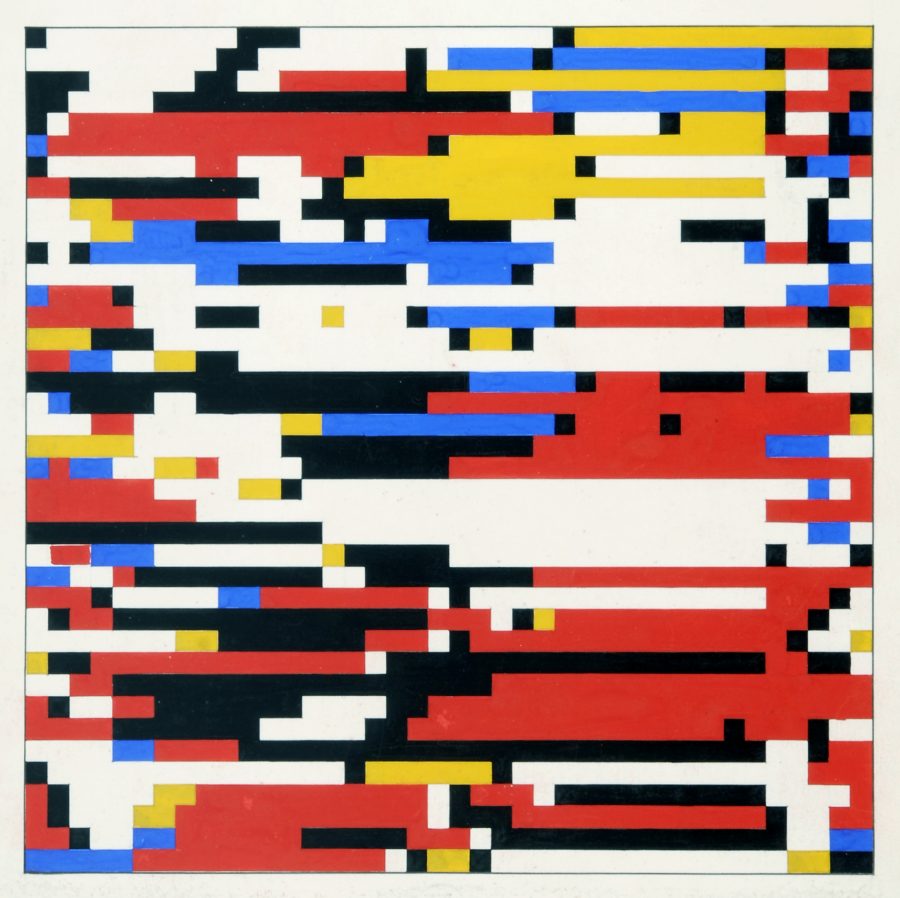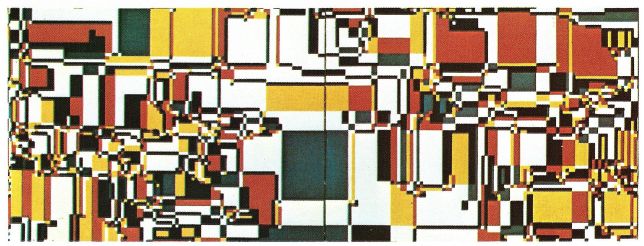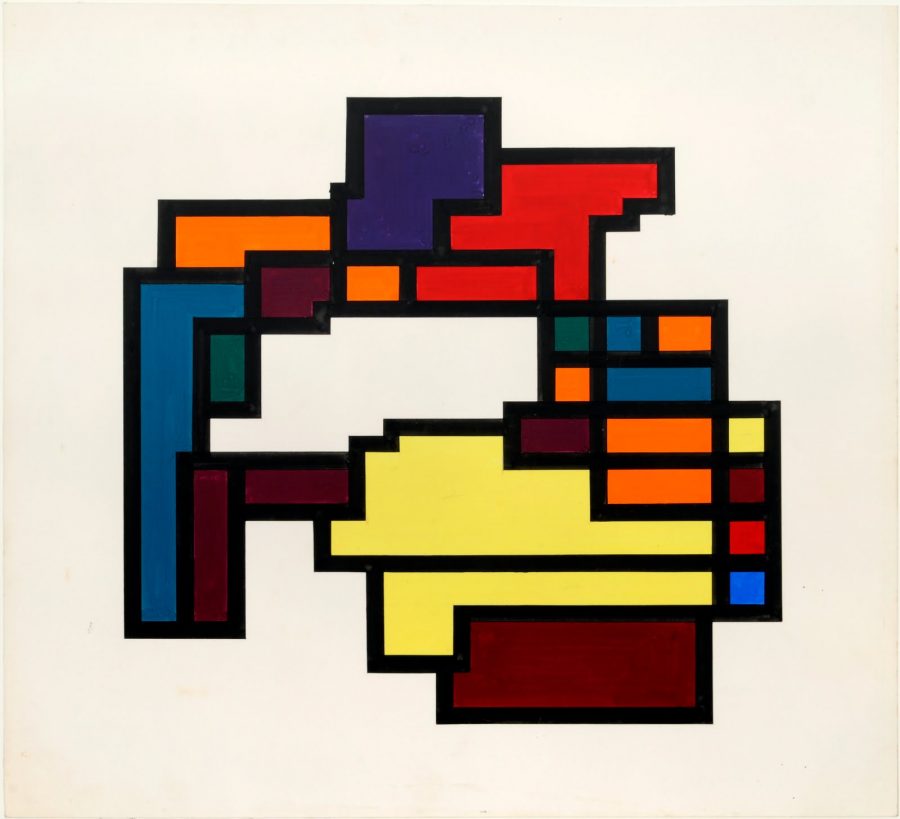[Most Recent Entries] [Calendar View]
Friday, May 12th, 2017
| Time | Event |
| 5:22a | The History of the World in 20 Odd Minutes Last year, we flagged Bill Wurtz’s “History of Japan,” an idiosyncratic video that covered 40,000 years of Japanese history in 9 minutes–everything from the rise of technology and religion, to the influence of China on Japan’s language and brand of buddhism, the emergence of the samurai, the country’s vexed relationship with the West, and the bombing of Nagasaki and Hiroshima. Although quantity isn’t everything, the video clocked more than 25 million views on YouTube–pretty impressive considering that Wurtz created the video as “a prototype to see if I could do a long video in the first place.” Now comes his new, more expansive video–History of the World in 20 minutes. Released on Wednesday, the video has already surpassed 4.5 millions views (surely more by the time you read this), and it may teach you a thing … or two … about world history. Have fun with it. And if you’re looking for meatier media that covers the big sweep of history, check out the items in the Relateds below. Follow Open Culture on Facebook and Twitter and share intelligent media with your friends. Or better yet, sign up for our daily email and get a daily dose of Open Culture in your inbox. If you’d like to support Open Culture and our mission, please consider making a donation to our site. It’s hard to rely 100% on ads, and your contributions will help us provide the best free cultural and educational materials. Related Content: Take Big History: A Free Short Course on 13.8 Billion Years of History, Funded by Bill Gates The History of the World in 46 Lectures From Columbia University The History of the World in 20 Odd Minutes is a post from: Open Culture. Follow us on Facebook, Twitter, and Google Plus, or get our Daily Email. And don't miss our big collections of Free Online Courses, Free Online Movies, Free eBooks, Free Audio Books, Free Foreign Language Lessons, and MOOCs. |
| 7:26a | A Free Course on Machine Learning & Data Science from Caltech Right now, Machine Learning and Data Science are two hot topics, the subject of many courses being offered at universities today. Above, you can watch a playlist of 18 lectures from a course called Learning From Data: A Machine Learning Course, taught by Caltech’s Feynman Prize-winning professor Yaser Abu-Mostafa. The course is summarized as follows:
A real Caltech course (it’s not watered down at all), the course assumes a familiarity with basic probability, matrices, and calculus. The lectures can be found on YouTube, iTunes U and this Caltech website, which hosts slides and other course materials. The professor wrote the course textbook, also called Learning from Data. Learning From Data will be permanently added to our ever-growing collection, 1200 Free Online Courses from Top Universities. Follow Open Culture on Facebook and Twitter and share intelligent media with your friends. Or better yet, sign up for our daily email and get a daily dose of Open Culture in your inbox. If you’d like to support Open Culture and our mission, please consider making a donation to our site. It’s hard to rely 100% on ads, and your contributions will help us provide the best free cultural and educational materials. Related Content: Download 243 Free eBooks on Design, Data, Software, Web Development & Business from O’Reilly Media The Neuronal Basis of Consciousness Course: A Free Online Course from Caltech A Free Course on Machine Learning & Data Science from Caltech is a post from: Open Culture. Follow us on Facebook, Twitter, and Google Plus, or get our Daily Email. And don't miss our big collections of Free Online Courses, Free Online Movies, Free eBooks, Free Audio Books, Free Foreign Language Lessons, and MOOCs. |
| 10:00a | How Baking, Cooking & Other Daily Activities Help Promote Happiness and Alleviate Depression and Anxiety
Image by Beth MacKenzie, via Flickr Commons Most healthy people practice at least some form of what we call these days “self-care,” whether it be yoga, meditation, running, writing, art, music, therapy, coloring books, or what-have-you. And if you’re functioning tolerably well in the madness of our times, you’re probably dipping regularly into the well of at least one restorative discipline, in addition to whatever larger beliefs you may hold. But perhaps you feel at loose ends—unable to find the time or money for yoga classes or painting, feeling too restless to sit motionless for half an hour or more a day…. The activities that sustain our psyches should not feel unattainable. One need not be a yogi, Zen monk, marathoner, or Impressionist to find regular fulfilment in life. Perhaps regular, ordinary activities have the power to make us just as happy. Recent research suggests that tasks such as “knitting, crocheting and jam-making” can “work wonders for wellbeing,” writes Tom Ough at The Telegraph, as can other creative practices like “cooking, baking, performing music, painting, drawing, sketching, digital design and creative writing.” All may have profound effects on emotional health. This list might expand indefinitely to include any hands-on activity with measurable results, from woodworking to beekeeping. A 2016 study of 658 students at New Zealand’s Otago University found that engaging in small creative pursuits on a daily basis produces enthusiasm and feelings of “flourishing”—“a mental health term describing happiness and meaning.” The results of, say, making a loaf of bread or a scarf, don’t simply benefit us in the moment, but carry over into the future. As the study’s lead author Tamlin Connor notes, “engaging in creative behaviour leads to increases in well-being the next day, and this increased well-being is likely to facilitate creative activity on the same day.” The more we bake, the more we’ll want to bake, the happier we’ll feel. Does focusing our attention on small, achievable daily tasks lead to the kind of metaphysical fulfilment most people seem to crave—what Viktor Frankl called “man’s search for meaning”? Not necessarily, no. “Recent research suggests,” notes Daisy Grewal at Scientific American, “that while happiness and a sense of meaning often overlap, they also diverge in important and surprising ways.” Frankl may not be wrong about the need for meaning, but even he admitted that seeking it out is not identical to the pursuit of happiness. In a 2013 study published in The Journal of Positive Psychology, Roy Baumeister, Kathleen Vohs, Jennifer Aaker, and Emily Garbinsky found that happiness, “flourishing,” or emotional well-being correlate strongly with “satisfying one’s needs and wants” as well as with “being a giver rather than a taker.” Philosophy, politics, religion, and art may seek truth or coherence, but while “concerns with personal identity and expressing the self contributed to meaning,” they have little lasting effect on happiness, as many a philosopher, priest, or poet may tell you. On the other hand, while having comfortable economic means does measurably improve happiness, it does not contribute significantly to a sense of larger purpose (that which, Frankl argued strenuously, can save our lives in times of crisis). Baumeister and his colleagues obtained their findings by surveying around 400 American adults over a period of three weeks, during which time the participants monitored a variety of daily activities. In one reading of the Otago University study, Daisy Meager at Vice focuses specially on baking as a means to ward off a “shitty mood.” It may be a matter of taste—some may prefer making sauces to cakes. The effects are the same, “a common cure,” writes Danny Lewis at Smithsonian, “for stress or feeling down.” Meager points to work done by Julie Ohana, a “culinary therapist” who uses the kitchen to help patients combat “depression, anxiety, and other mental health issues.” Vice‘s Jackson Connor describes his personal experience of how cooking “alleviates symptoms of stress and anxiety almost immediately,” as well as over time. And no less an authority than food theorist Michael Pollan makes the persuasive case for “how cooking can change your life” in the short animated video below (see his full talk at the RSA here). Further arguing, however, for baking as a special form of “flourishing,” Julie Thomson at HuffPo describes the act as “a productive form of self-expression and communication” and consults with experts like Ohana and Donna Pincus, associate professor of psychological and brain sciences at Boston University, who told Thomson, “Baking has the benefit of allowing people creative expression.” People who may not be natural artists, writers, or musicians. Yet baking is also a kind of problem-solving as well as a creative act, and “actually requires a lot of full attention.”
The reference to mindfulness is apt. (Go ahead and read about a course on “Breaditation,” make fun of it, then try it at home.) I know not a few people who swear they cannot meditate to save their lives, but who will happily spend a couple hours on a Saturday evening baking brioche or plates of cookies. But there’s more to it than the meditative absorption that comes from mindful activity. Baking, says Pincus—and cooking in general—is a form of altruism. “The nice thing about baking,” she ways, “is that you have such a tangible reward at the end and that can feel very beneficial to others.” So the research suggests that—whatever activities one gravitates toward—finding happiness on a daily basis involves more than using Pinterest boards and magazines to craft a cozy, stylish new life. Though any sustained creative activity may do the trick, we approach closer to lasting happiness as well as greater fulfillment—to meaning—when we direct activity to a “connection with other people” through generosity. Related Content: Michael Pollan Explains How Cooking Can Change Your Life; Recommends Cooking Books, Videos & Recipes 53 New York Times Videos Teach Essential Cooking Techniques: From Poaching Eggs to Shucking Oysters How to Get Started with Yoga: Free Yoga Lessons on YouTube Stream 18 Hours of Free Guided Meditations Josh Jones is a writer and musician based in Durham, NC. Follow him at @jdmagness How Baking, Cooking & Other Daily Activities Help Promote Happiness and Alleviate Depression and Anxiety is a post from: Open Culture. Follow us on Facebook, Twitter, and Google Plus, or get our Daily Email. And don't miss our big collections of Free Online Courses, Free Online Movies, Free eBooks, Free Audio Books, Free Foreign Language Lessons, and MOOCs. |
| 2:00p | Sigmund Freud, Father of Psychoanalysis, Introduced in a Monty Python-Style Animation Pity the hedgehog. The freezing temperatures of winter compel them to cozy up to others of its kind, but the prickly spines covering their bodies prevent them from sustaining the easy, ongoing intimacy they so crave. It’s a hell of a metaphor for human relationships, compliments of 19th-century philosopher Arthur Schopenhauer. It certainly spoke to Sigmund Freud, who devoted his life trying to figure out why so many of us resort to petty behaviors, spurning those we love, and sabotaging ourselves at every turn. Popular representations would have us believe that the father of psychoanalysis was a detached sort of know-it-all, emotionally superior to the basket cases sniveling on his couch. Not so. As he noted in 1897: I have been through some kind of neurotic experience, curious states… twilight thoughts, veiled doubts… The chief patient I am preoccupied with is myself… my little hysteria… the analysis is more difficult than any other. Something from the deepest depths of my own neurosis sets itself against any advance in understanding neuroses… We feel ya’, doc, and so does The School of Life, the London-based organization for developing emotional intelligence, co-founded by philosophical essayist, Alain de Botton:
The school puts your money where its mouth is by retaining a roster of licensed psychotherapists who can be booked for in-person or Skype sessions. It’s not for everyone. There are those who are determined to pursue the path to contentment and self-knowledge solo, impervious to Freud’s belief that “No one who disdains the key will ever be able to unlock the door.” The therapy-averse can still learn something from the video above. Narrator de Botton charms his way through an easily digested overview of Freud’s personal and professional life, and the resulting tenets of psychoanalysis. And filmmaker Mad Adam ensures that this brief trip through the infant phases—oral, anal, phallic—will be a jolly one, replete with droll, mostly vintage images. Release more monsters of the id with the School of Life’s psychotherapy playlist. Related Content: 20,000 Letters, Manuscripts & Artifacts From Sigmund Freud Get Digitized and Made Available Online What is Love? BBC Philosophy Animations Feature Sartre, Freud, Aristophanes, Dawkins & More Ayun Halliday is an author, illustrator, theater maker and Chief Primatologist of the East Village Inky zine. Follow her @AyunHalliday. Sigmund Freud, Father of Psychoanalysis, Introduced in a Monty Python-Style Animation is a post from: Open Culture. Follow us on Facebook, Twitter, and Google Plus, or get our Daily Email. And don't miss our big collections of Free Online Courses, Free Online Movies, Free eBooks, Free Audio Books, Free Foreign Language Lessons, and MOOCs. |
| 4:30p | Japanese Computer Artist Makes “Digital Mondrians” in 1964: When Giant Mainframe Computers Were First Used to Create Art  In the 21st century, most of us have tried our hand at making some kind of digital art or another — even if only touching up cellphone photos of ourselves — but imagine the task of producing it 50 years ago. To make digital art before the world had barely heard the term “digital” required access to a mainframe computer, those hugely expensive hulks that filled rooms and printed out reams and reams of paper data, and the considerable technical know-how to operate it. But the achievement also, to go by the very early example of Hiroshi Kawano, required a background in philosophy. A graduate of the University of Tokyo majoring in aesthetics and the philosophy of science before becoming a research assistant at that school and then a lecturer at the Tokyo Metropolitan College of Air-Technology, Kawano marshaled his knowledge and experience to create these “digital Mondrians,” so described because of their computer-generated resemblance to that Dutch painter‘s most rigorously angular, solidly colored work. Kawano had drawn inspiration, according to a Deutsche Welle article on his donation of his archives to Germany’s Center for Media Art, from “the writings of the German philosopher Max Bense, who proposed (among other things) the idea of measuring beauty using scientific rules. At the same time, Kawano heard that scientists were using computers to create music. Putting the two together, he decided to explore the possibility of using a computer to program beauty.”  Doing so required “writing programs in complex computer languages, then laboriously punching these programs into hundreds of cards before feeding them into the machine.” And “while the design of his works produced during the 1960s might look simple — they’re not. They are the result of complex mathematical algorithms programmed so that, although Kawano sets the rules for how the picture could look, he can’t determine exactly what will appear on the printer.”  Just before Kawano passed away in 2012, the ZKM (or Center for Art and Media Karlsruhe), celebrated his pioneering digital art with the exhibition “The Philosopher at the Computer,” some of which you can see in this German-language video clip. “The retrospective emphasizes Kawano’s special role in the circle of pioneers in ‘computer art,'” says its introduction. “He was neither artist, who discovered the computer as a new production medium and theme, nor engineer who came to art via the new machine, but a philosopher, who left his desk for the computer center to experiment with theoretical models.” Can computers create art? Can they even be used to create art? These questions now have practically obvious answers in the affirmative, but back in 1964 when Kawano produced the first of these pieces, working through trial and error with the advice of the curious staff of his university’s computer center, the questions must have sounded impossibly philosophical. Today, writes Overhead Compartment’s Claudio Rivera, Kawano’s digital Mondrians “suggest themselves as an oddly ephemeral transition in the nexus of technology and art. The familiar colors and forms are flash-frozen in crystalline pixelation, almost as if seized up in the final, overheated throes of a suddenly-too-old computer.” Related Content: Andy Warhol’s Lost Computer Art Found on 30-Year-Old Floppy Disks Watch the Dutch Paint “the Largest Mondrian Painting in the World” Based in Seoul, Colin Marshall writes and broadcasts on cities and culture. He’s at work on a book about Los Angeles, A Los Angeles Primer, the video series The City in Cinema, the crowdfunded journalism project Where Is the City of the Future?, and the Los Angeles Review of Books’ Korea Blog. Follow him on Twitter at @colinmarshall or on Facebook. Japanese Computer Artist Makes “Digital Mondrians” in 1964: When Giant Mainframe Computers Were First Used to Create Art is a post from: Open Culture. Follow us on Facebook, Twitter, and Google Plus, or get our Daily Email. And don't miss our big collections of Free Online Courses, Free Online Movies, Free eBooks, Free Audio Books, Free Foreign Language Lessons, and MOOCs. |
| << Previous Day |
2017/05/12 [Calendar] |
Next Day >> |




